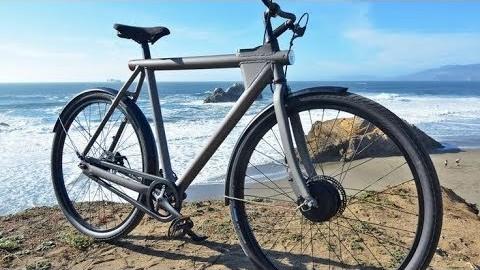Planning on getting an electric bike? What makes an e-bike different from the traditional versions is its inclusion of three components — a motor, a sensor, and a battery. These parts augment human power, making cycling a pleasant experience. Even older people will find riding uphill an easy task if they’re on an electric bike.
Motor
The electric motor is the single most important component of an e-bike. Motors come in two variants. The first type is a hub motor, which drives the wheel of the bike directly. They are usually excellent value for the money. However, hub motors are typically absent in high-end bikes. The second type of motor usually used is a crank motor.
“Crank motors provide assistance for the pedals, which in turn move the wheels. They tend to offer power transfer in a better way, because your power is going into the cranks and adding power here can feel more ‘natural’ than having power coming directly from the wheels. Crank motors are more commonly found on higher-end electric bikes and often come with higher amounts of torque,” according to Rutland Cycling.

Crank motors on e-bikes provide power to the pedals instead of turning the wheel directly. (Image: Screenshot via YouTube)
Sensor
An e-bike can come with any of the two types of sensors — speed sensors or torque sensors. If equipped with a speed sensor, it’ll immediately engage the motor when pedaling begins. This gives you some assistance in pedaling. In contrast, the torque sensor is a bit smarter and intuitive in the sense that it assists in a way that matches your speed. This can be incredibly useful when cornering and maneuvering.
Battery
The battery can be located anywhere on the bike depending on the vehicle’s size and frame. Some bikes have batteries on the lower portion of the frame or the luggage rack. A typical e-bike battery takes about six hours to charge and can last for up to 700 charges. Batteries of high-end bikes can be charged in around 2 to 4 hours, with their lifespan lasting for about 1,000 charges. Bikers usually carry spares when cycling long distances.
“Typical batteries will give your bicycle a range of 10-40 miles between charges (depending on the terrain) and a top speed of 10-20 mph (which is about the maximum most countries allow for these vehicles by law). You can extend the range by pedaling or free-wheeling some of the time,” according to Explain That Stuff.
Some e-bikes use a braking mechanism called regenerative braking in which the electric motor is used to slow down the bike when stopping. Electricity generated from this is fed back into the battery pack. The efficiency gain of regenerative braking depends on the riding environment and the person’s style of cycling. According to estimates, regenerative braking can add about 10 percent further distance per battery charge on regular terrain.

The efficiency gain of regenerative braking depends on the riding environment and the person’s style of cycling. (Image: Screenshot via YouTube)
Operating an e-bike
Using an electric bike is for the most part the same as riding a traditional bike — you still need to pedal. Once you start, however, you can turn on the power assist and choose how much assistance you need from the motors. The battery will provide power to the motor, which will power the drivetrain to give the biker optimal assistance. The display on the bike will let you set the assistance level. Owners should get their e-bikes serviced every three to six months to keep them in top condition.
Follow us on Twitter, Facebook, or Pinterest

